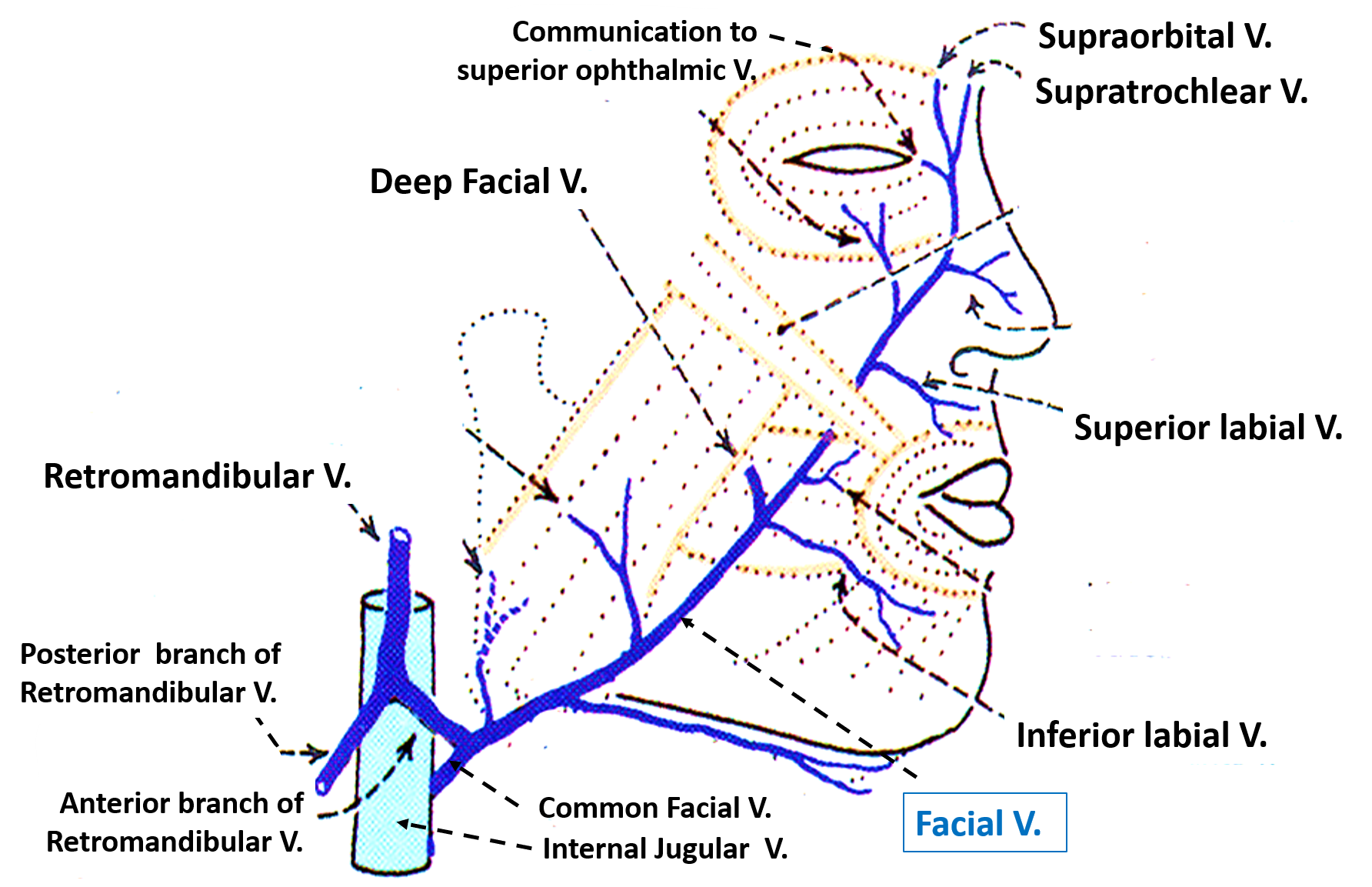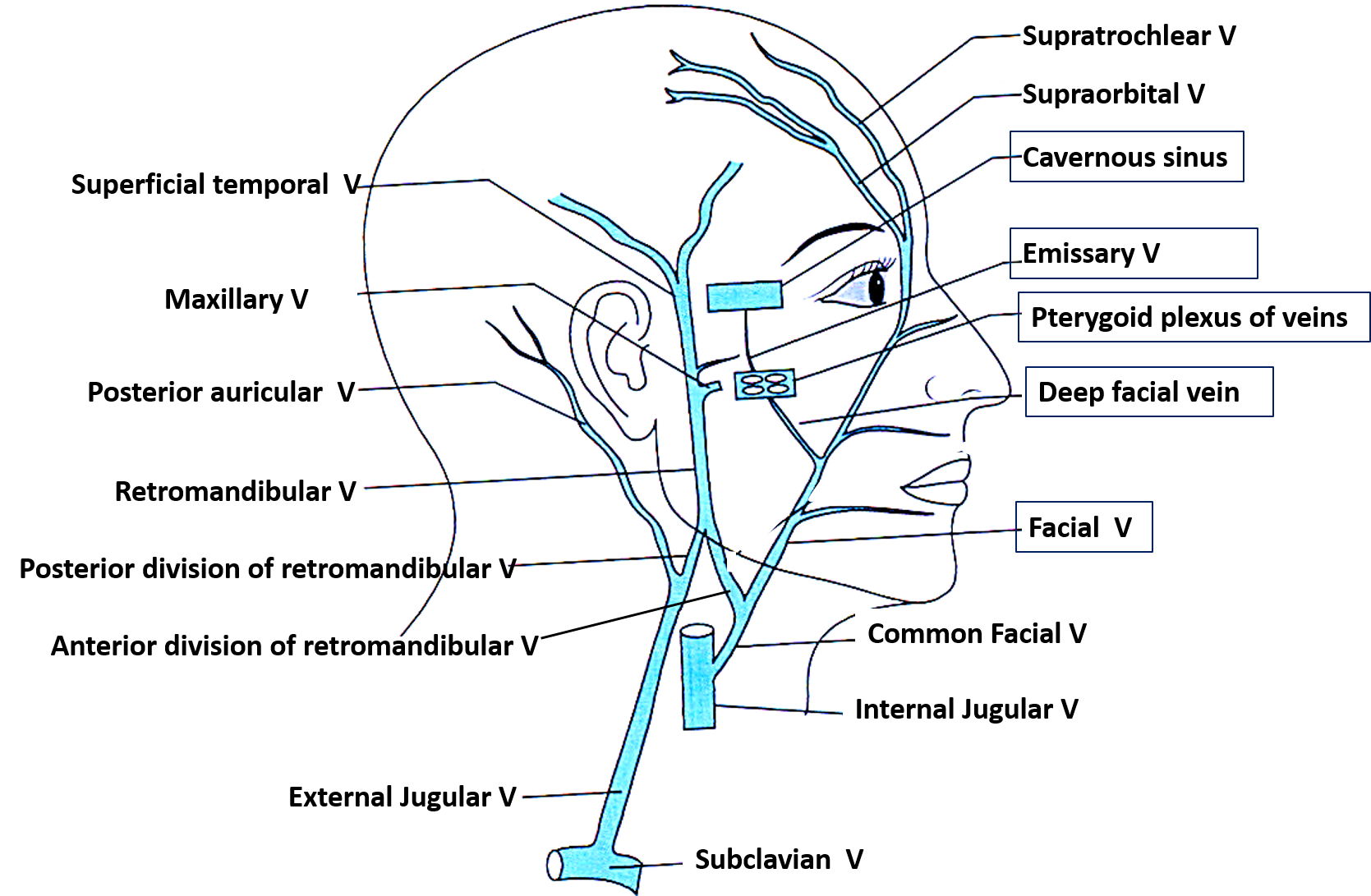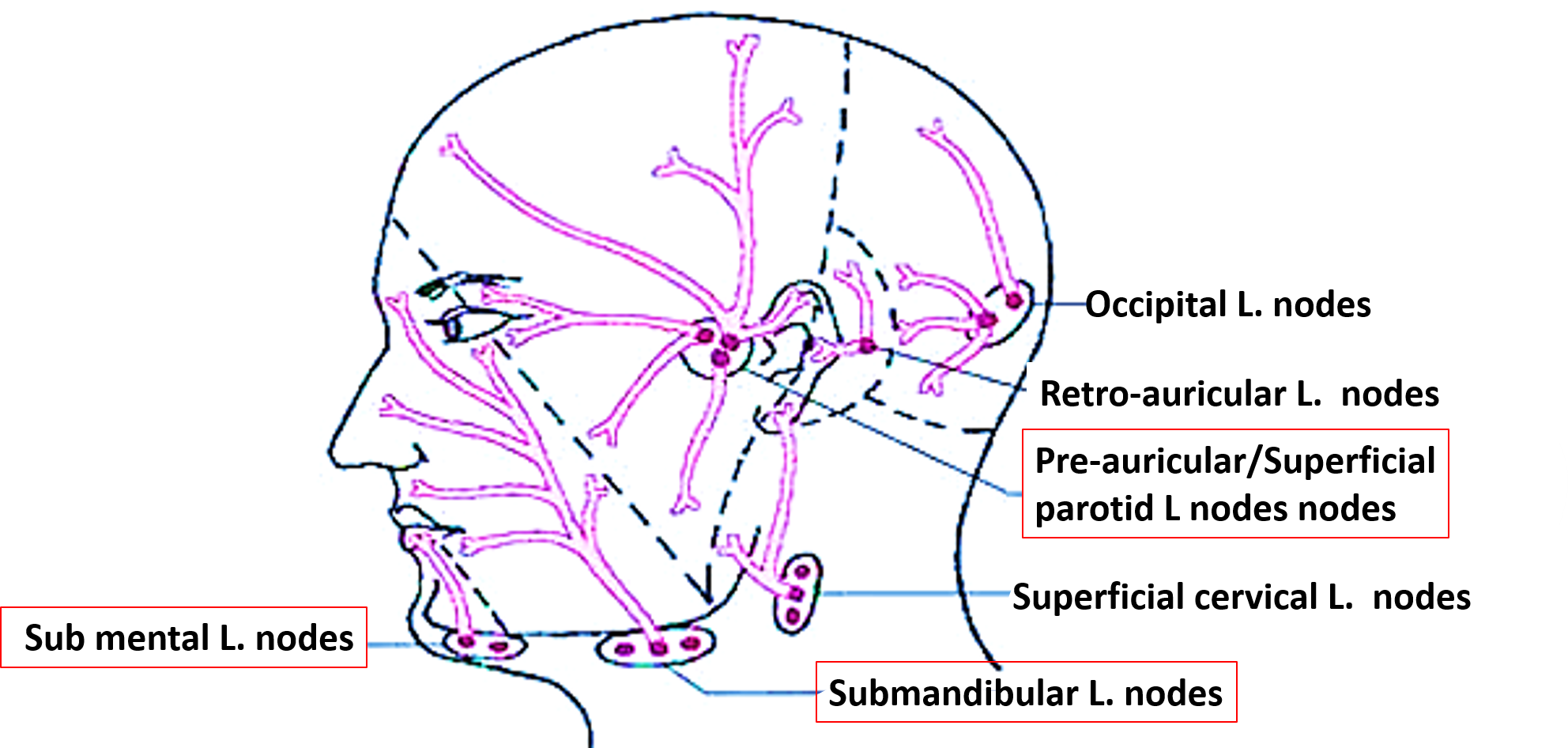Name the Main Veins Responsible for Venous Drainage of Face
Venous return from the face occurs via:
- Facial vein and
- Retromandibualar vein
Describe the Formation, Course, termination and Connections of Facial Vein.
Formation: Facial vein begins as angular vein which is formed by the union of supratochlear and supraorbital veins ( drain the blood from forehead) near the medial angle of the eye.
Course: It passes downwards and backwards on the face behind the facial artery. It takes a straighter and more superficial course than the facial artery.It crosses the anteroinferior angle of the masseter muscle. It then pierces the investing layer of deep cervical fascia and in the neck runs superficial to the submandibular gland.
Termination: It terminates by joining the anterior division of retromandibular vein to form the common facial vein. The common facial vein drains into the Internal jugular vein.

Deep Connections of Facial Vein
Facial communicates with the cavernous sinus through:
- the angular vein and superior ophthalmic vein -> Cavernous sinus.
- the deep facial vein and pterygoid plexusus-> emissary vein-> cavernous sinus.

Facial vein and its communicating veins do not have valves, therefore, blood can flow in any direction.
Describe the Formation, Divisions and Termination of Retromandibular Vein
Formation: The superficial temporal vein and maxillary vein unite within the parotid gland to form the retromandibular vein.
Divisions: Before emerging from the parotid gland, the retromandibular vein divides into anterior and posterior branches.
Termination: The anterior branch joins with the facial vein to form the common facial vein which in turn drains into internal jugular vein The posterior branch joins with the posterior auricular vein to form the external jugular vein which drains into subclavian vein.
Applied Aspect
Dangerous area of the face
Upper lip, tip of nose and alae of the nose forms the ‘dangerous area of the face.’
The facial vein communicates with cavernous sinus (refer to the diagram above) via deep facial vein which is connected to pterygoid venous plexus. Pterygoid plexus in connected to cavernous sinus via emissary veins ( pass through foramen ovale and spinosum).
As the facial vein does not have valves, hence infection from the face especially from the dangerous area of the face may spread in retrograde direction to cavernous sinus and cause thrombosis of cavernous sinus and meningitis.
The contraction of the facial muscles aid spread of this infection against centre of gravity through the facial vein.
Facial vein also communicates with the cavernous sinus via superior ophthalmic vein.
Lymphatic Drainage of Face
Face is divided into three arbitrary areas, from which the lymphatics drain into the following groups of lymph nodes:
Pre-auriclar or superficial parotid lymph nodes: Upper area of face comprising:
- lateral part of forehead
- lateral halves of eyelids
- conjunctiva
- lateral part of cheek
- parotid region drain into this group of lymph nodes.
Submandibular lymph nodes: Intermediate area of face which includes:
- central part of forehead
- medial halves of eyelids
- frontal air sinus
- nose with maxillary air sinus
- upper lip
- lateral part of lower lip
- medial part of cheek
- most of the lower jaw drains into these nodes.
Besides the above mentioned areas of face the submandibular lymph nodes also receive lymphatic from upper and lower jaws and teeth, anterior 2/3 of tongue , floor of the mouth and anterior 2/3rd of palate.
Submental lymph nodes: Lower area of face comprising central part of lower lip and chin drains into these lymph nodes.

Applied Aspects
- During infections of the eyelids the preauricular nodes are inflamed.
- In sinusitis involving frontal and maxillary sinuses, caries teeth, infection of tongue, palate submandibular lymph nodes may get enlarged and tender.
- Boils in the chin causes enlargement of submental nodes.
